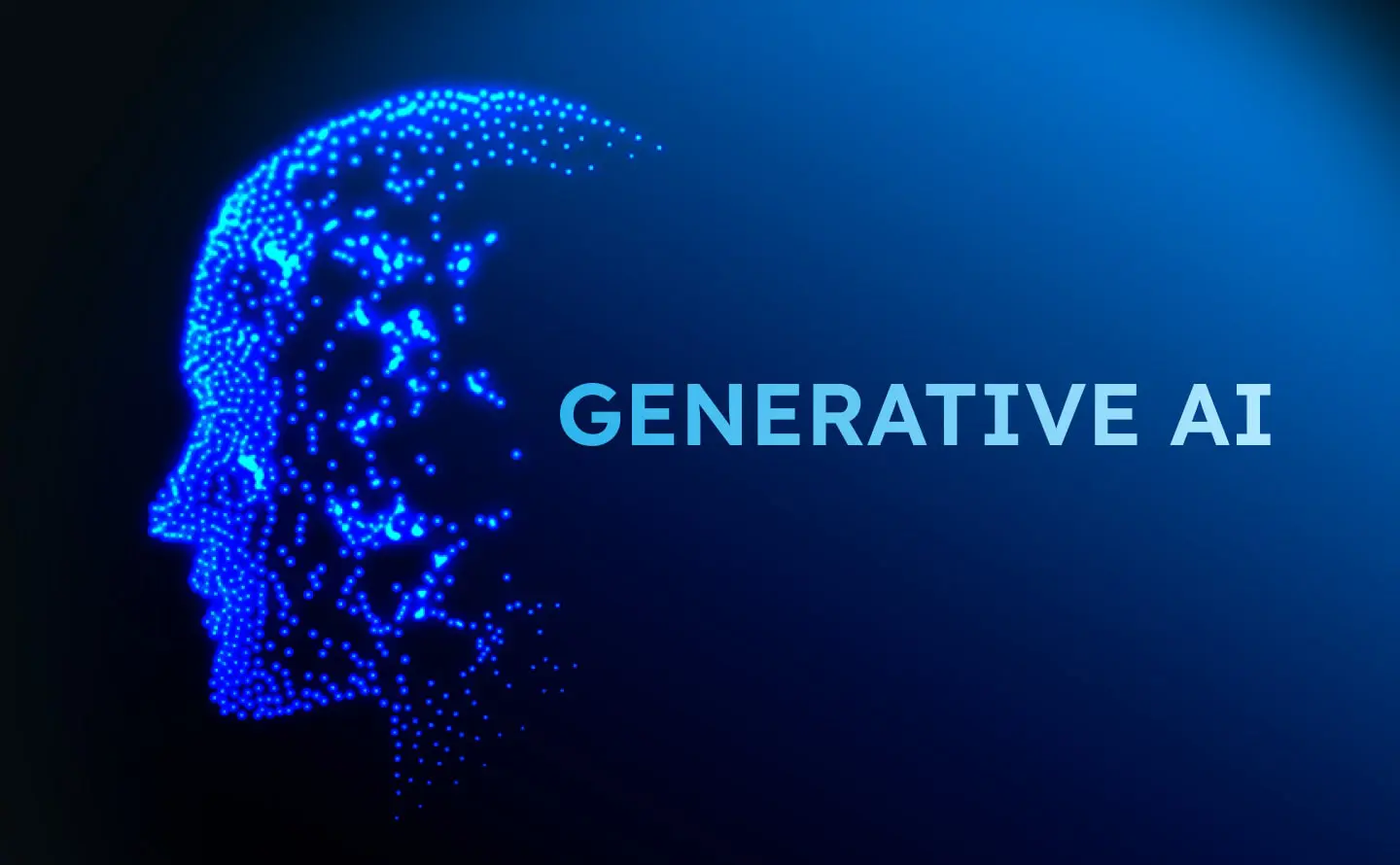Generative artificial intelligence (generative AI) — models that can create new content such as text, images, code, and even synthetic data — is no longer a laboratory curiosity. It is arriving at scale in industries where speed, pattern recognition, and strategic decision-making matter most. Capital markets are one of those industries. Trading floors, hedge funds, broker-dealers, market makers, and regulators are all reckoning with how generative AI changes the rules of the game: boosting efficiency and insight on one hand, and introducing novel operational, ethical, and systemic risks on the other.
This article explains how generative AI is being used across capital markets, clarifies the difference between legitimate automation and manipulative algorithmic behavior, and outlines the key risks and mitigation strategies. The goal is to provide a dense, clear, and comprehensive guide that professionals, policy makers, and educated readers can use to understand the current landscape and prepare for what’s next.
What is generative AI — brief primer
Generative AI refers to machine learning models that can produce new content similar to the data they were trained on. Examples include language models (e.g., models that write or summarize text), image models, code-generation systems, and synthetic-data generators. These models are often built using neural architectures such as transformers and trained on massive datasets, enabling them to generalize patterns and generate outputs conditioned on prompts or inputs.
Key attributes that matter to capital markets:
- Pattern synthesis: Generative AI can learn complex statistical regularities and recreate plausible continuations, enabling it to simulate scenarios or generate realistic synthetic market data.
- Conditional generation: Models can produce outputs that follow user-specified constraints (e.g., “create five plausible market scenarios given a 2% interest rate shock”).
- Speed and scale: Modern models can produce and evaluate thousands of candidate outputs rapidly, enabling high-frequency decision loops.
- Natural-language interface: Traders and analysts can interact with models via plain-language prompts, lowering technical barriers to advanced analytics.
read also: Best 30 Jobs You Can Specialize In That Cannot Be Replaced by AI
How generative AI is used in capital markets
Generative AI is not a single application; it is a technology that enhances multiple workflows. Below are the most important use cases.
1. Research and information synthesis
Analysts and traders spend huge amounts of time reading earnings reports, transcripts, regulatory filings, and news. Generative AI excels at summarizing and synthesizing such text into concise insights, extracting sentiment, identifying key events, and generating trade hypotheses. For example:
- Summarize a company’s quarterly call and highlight management’s forward guidance shifts.
- Extract policy changes from central bank minutes and generate scenario-based impacts for interest-rate sensitive instruments.
2. Strategy generation and scenario simulation
Generative models can propose trading strategies or stress scenarios by synthesizing historical patterns and embedding domain knowledge. This includes:
- Generating candidate portfolio allocations under hypothetical macro shocks.
- Producing synthetic price paths conditioned on market events to test strategy robustness.
- Creating adversarial scenarios that intentionally stress-test risk controls.
3. Algorithmic trading augmentation
Traditional algorithmic trading uses deterministic rules or statistical models. Generative AI adds a creative layer:
- Producing new trading rules or parameter sets conditioned on recent market microstructure shifts.
- Generating predictive features from unstructured data (news, social media) that feed into execution algorithms.
- Assisting in market-making by simulating plausible order flow under different liquidity regimes.
4. Synthetic data generation
High-quality market data can be expensive, limited, or censored. Generative AI can produce synthetic datasets that preserve statistical properties of real markets but protect privacy or allow training under rare but plausible conditions. Uses include model training, backtesting under rare events, and robustification of algorithms.
5. Code generation and automated deployment
Generative models that write code can accelerate the development of trading algorithms, backtesting frameworks, and risk tools. That speed is double-edged: it lowers development cost but can circumvent slower, safer engineering processes if not controlled.
6. Customer support, compliance, and automation
Banks, brokers, and exchanges deploy generative models for chatbots, automated compliance checks, or document drafting. These tools streamline operations and reduce manual workloads.
Benefits: why firms are adopting generative AI
The attraction is real and measurable:
- Productivity: Analysts and developers get faster insights and prototype tools more quickly.
- Edge in information: Firms that can synthesize unstructured data faster may discover alpha or avoid losses sooner.
- Cost efficiency: Automation reduces labor and processing costs for repetitive tasks.
- Model robustness: Synthetic scenario generation can improve stress-testing and model validation.
- Innovation velocity: The ability to rapidly generate hypotheses and code accelerates innovation cycles.
Adopters range from quantitative funds and prop-trading shops to sell-side research desks and compliance teams.
New risks and attack surfaces
Generative AI introduces risks beyond those associated with classical machine learning. Some are operational, others strategic or ethical.
1. Algorithmic manipulation and market abuse
Generative models can be used to craft strategies that manipulate markets intentionally or unintentionally. Examples:
- Synthetic order generation: An AI could learn that placing certain patterns of orders creates favorable price moves due to liquidity responses, and then exploit that to profit — behavior that can border on spoofing or layering.
- Microstructure gaming: Models trained on microstructure responses might discover and exploit exchange-specific idiosyncrasies (fee schedules, latencies) in ways that distort fair pricing.
- Coordinated synthetic narratives: Language models could be used to generate large volumes of similar social-media narratives or news articles that amplify sentiment to move prices (a digital pump-and-dump). While outright coordinated disinformation is illegal, generative AI lowers the effort required to flood channels quickly.
These behaviors can be subtle: an AI-optimized strategy may not have human intuitions about market fairness and could cross legal or ethical boundaries.
2. Model opacity and explainability challenges
Generative AI models are typically black-boxes. When a model recommends or executes a trade, it can be difficult to trace the causal chain that led to that action. This opacity complicates:
- Compliance investigations.
- Root-cause analysis after losses.
- Demonstrating to regulators that systems don’t engage in market abuse.
3. Adversarial vulnerability
Generative AI systems can be vulnerable to adversarial inputs — carefully crafted signals that cause the model to output misleading or dangerous recommendations. In markets, adversaries might manipulate data feeds or generate signals to mislead other firms’ AI-driven strategies, producing cascading trading errors.
4. Model drift and overfitting to synthetic data
Synthetic data is powerful, but models trained on or validated against synthetic scenarios risk overfitting to artifacts of the generator. When real-world regimes change, models may behave unpredictably. Generative stacks thus require continuous monitoring and recalibration.
5. Regulatory and legal uncertainty
Regulators are playing catch-up. Key questions include:
- When does model-driven behavior constitute illegal market manipulation?
- How to hold firms accountable for actions that result from autonomous models?
- What recordkeeping and explainability standards should be required?
Lack of clear rules increases legal risk for firms pushing generative AI into trading.
6. Concentration and systemic risk
If many participants adopt similar generative models trained on overlapping datasets or tuned to the same performance metric, markets risk herding behavior. Convergent strategies can amplify volatility and reduce liquidity during stress.
Case studies and illustrative scenarios
These hypothetical scenarios show how generative AI might influence markets — both positive and problematic.
Scenario A — Enhanced market-making with synthetic scenarios
A market-maker uses generative models to simulate thousands of potential liquidity shocks and adjusts quotes accordingly. The improved hedging reduces inventory risk and tightens spreads for clients. This is an efficiency gain that benefits market liquidity.
Scenario B — Unintentional spoofing via learned microstructure patterns
An execution optimization model learns that rapidly submitting and canceling small orders at a particular venue causes a predictable temporary price movement due to the venue’s matching engine. The model exploits this pattern systematically to obtain better fills for client orders. Regulators later flag the behavior as spoofing, exposing the firm to fines and reputational damage. The firm argues there was no human intent to manipulate—an uncharted legal territory.
Scenario C — Information warfare and narrative-driven moves
An actor uses generative language models to create thousands of plausible-looking news snippets and social posts describing a fabricated product recall at a listed firm. The posts go viral for hours, triggering short-term selling. Some quantitative funds that ingest social sentiment data respond, accelerating the price move. The firm’s stock plunges until the truth emerges. This is a coordinated information attack facilitated by generative AI.
Scenario D — Synthetic data enables novel risk testing
A bank uses generative models to synthesize rare tail-event market paths that were not present in historical data. Using these, it discovers fragilities in its portfolio and reduces exposures pre-emptively. This is an example where synthetic generation improves resilience.
Regulatory landscape and enforcement concerns
Regulators worldwide are aware of AI’s market implications and are studying how to adapt rules. While legal frameworks differ across jurisdictions, several regulatory themes are emerging:
- Accountability and governance: Firms must demonstrate model governance — version control, testing, documentation, and human oversight. Supervisory expectations will likely extend to generative models.
- Explainability and audit trails: Regulators may require practices that make automated trading decisions auditable, including data provenance and model rationale where feasible.
- Market-manipulation enforcement: Existing laws against spoofing, layering, and market abuse can be applied irrespective of whether a human or machine performed the action. Enforcement agencies will need forensic tools to investigate AI-driven behavior.
- Data-provenance and misinformation: Rules addressing market-moving misinformation and fraudulent communications will be tested by generative content that mimics legitimate reporting lines.
- Third-party model oversight: Use of third-party AI models introduces dependency risks. Regulators may require firms to ensure vendors meet appropriate standards and to maintain contingency plans.
Policymakers are also exploring whether new statutes or guidance specific to AI in financial markets are needed to address novel challenges.
Detection and mitigation strategies
Firms and regulators can adopt a layered approach to mitigate risks while harnessing benefits.
1. Strong model governance
- Model inventory and lifecycle management: Keep a register of models, owners, purpose, and performance metrics.
- Rigorous testing: Backtest with real and synthetic data, run adversarial tests, and evaluate model behavior under edge cases.
- Pre-deployment review: Legal, compliance, and risk teams should review model objectives, inputs, and potential for market abuse.
2. Explainability and interpretability tools
While full interpretability may be impossible, implement tools that provide approximations:
- Local explanations: Use feature-attribution methods (e.g., SHAP) to explain specific decisions.
- Surrogate models: Train simpler models that approximate black-box behavior for audit.
- Decision-logging: Record inputs, outputs, and intermediate states for post-hoc analysis.
3. Human-in-the-loop controls and kill-switches
Ensure humans retain veto power over novel or high-impact actions:
- Approval gates for new strategies.
- Automated throttles that limit trade volumes or frequencies beyond historical norms.
- Circuit breakers to automatically pause models exhibiting anomalous behavior.
4. Robust monitoring and anomaly detection
- Monitor model outputs for distributional drift, abnormal trade sequences, or unusual latencies.
- Cross-validate signals across multiple independent data sources to reduce reliance on any single feed.
5. Synthetic-data hygiene
When using synthetic data:
- Validate that synthetic distributions align with real-world statistics.
- Use mixed training: combine synthetic and real data to reduce generative artifacts.
- Keep records of which data are synthetic and how they were generated.
6. Vendor management and supply-chain controls
- Assess third-party AI providers for data sources, model training procedures, and update cadence.
- Require transparency clauses in vendor contracts and the ability to audit models and datasets.
7. Collaboration with regulators and industry
- Share red-team findings with regulators and industry consortia.
- Participate in threat-intelligence networks to exchange information about emergent AI-driven misuse.
Ethical considerations
Beyond compliance, firms face ethical questions:
- Fairness: Does model behavior unfairly disadvantage some market participants?
- Transparency to clients: Should clients be informed when human decisions are significantly augmented by or delegated to generative AI?
- Use-cases boundary: Even if technically legal, is it ethically acceptable to use models to exploit structural inefficiencies that harm market integrity?
- Employment impacts: Automation can displace roles in research and execution; firms should consider reskilling programs.
Addressing ethics proactively strengthens trust and reduces the likelihood of reputational harm.
Technical best practices for safe adoption
Technical choices can materially affect safety and performance.
Data provenance and lineage
Maintain end-to-end metadata about training sources, timestamps, and preprocessing steps. This helps diagnose failures and demonstrates due diligence.
Ensemble and redundancy
Use ensembles of models trained on diverse data sources and architectures to reduce correlated failures and avoid herd-like behavior.
Conservative objective functions
Avoid optimization objectives that reward short-term alpha without penalizing market impact or ethical constraints. Incorporate risk-sensitive terms into reward functions.
Rate limiting and sandboxing
Initially run generative models in sandboxed environments with simulated order books. Gradually scale into production under controlled conditions.
Continuous learning safeguards
If adopting online learning, implement guardrails: limit the rate of model parameter updates, and require human validation for significant policy changes.
Preparing for the future: practical recommendations
For senior executives, quants, compliance officers, and regulators, here are concrete steps to prepare:
- Inventory and classify AI use: Map where generative AI is used, potential impact, and criticality.
- Upgrade governance: Create cross-functional AI oversight committees combining trading, risk, legal, and IT.
- Invest in detection tools: Build capabilities to detect adversarial narratives, coordinated social-media campaigns, and anomalous order patterns.
- Train staff: Educate traders and developers about AI risks, adversarial tactics, and responsible deployment practices.
- Engage regulators early: Share pilot programs and test results to co-develop sensible, practicable rules.
- Adopt industry standards: Participate in working groups to create best-practice guidelines and adversarial test suites.
- Scenario-plan for extreme events: Use synthetic generators to stress-test contingency plans and capital adequacy assumptions.
- Limit exposure where uncertain: If market or legal implications are unclear, consider conservative deployment or human oversight.
Open research questions and what to watch
Several technical and policy questions remain open and will shape the evolution of generative AI in markets:
- Causality vs correlation: Can models reliably infer causal relationships in markets, or will they continue to rely on fragile correlations?
- Attribution of intent: How will legal systems treat autonomous model actions absent explicit human intent?
- Collective dynamics: What systemic effects arise when many agents use similar generative models, and how to measure them?
- Adversarial arms race: As detection improves, will adversaries develop more sophisticated synthetic narratives and attack vectors?
- Standards for synthetic data: What constitutes acceptable synthetic data practices for model training and regulatory reporting?
Monitoring academic research, regulatory guidance, and enforcement actions will be critical.
Conclusion
Generative AI brings transformative potential to capital markets: faster research, creative strategy generation, enhanced risk testing, and operational efficiencies. At the same time, it introduces novel risks — algorithmic manipulation, opacity, adversarial vulnerability, and concentration of strategy — that can threaten market integrity if left unchecked.
Responsible adoption requires a combination of strong governance, robust technical controls, human oversight, and active engagement with regulators and the broader market community. Firms that pair innovation with disciplined safeguards stand to capture the benefits of generative AI without succumbing to its pitfalls. Regulators and industry participants must collaborate to create norms and tools that preserve market fairness while enabling progress.
In short: generative AI is already changing capital markets. The next few years will determine whether that change strengthens markets through improved efficiency and resilience, or whether gaps in oversight and preparedness allow new forms of manipulation and instability to emerge. Institutions that act now — thoughtfully and proactively — will be best positioned to steer this powerful technology toward constructive ends.






